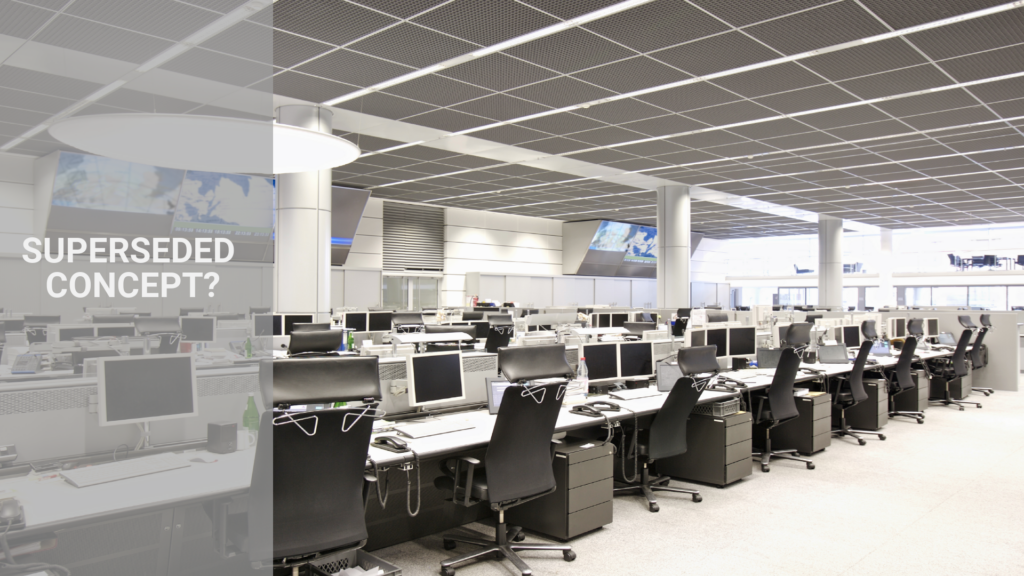The new way to work
The last year had tremendous effects on the entire world, on society, and in most cases also the way people work. Where it was feasible, people started working from home. This situation also highlighted gaps in the level of digitalization, like accessibility to fast internet, applications, and social platforms for communication. The impact on the aviation industry itself was massive leading to a high pressure for cost and process optimization (watch out for our previous blog: Optimizing Passenger Processing for Future Airports)
In this context, it is no wonder that also in the aviation world, the industry started thinking of future concepts for remote working and virtual accessibility. Remote work is easier for non-operational staff than operational staff, who are usually on-site to perform their job functions. Administrative functions, like supervisors, coordinators, planners, and business unit leaders, have alternative options. In the following, we will look at the possibilities to be engaged without being physically present.
APOC, a superseded concept ?

In the years before Corona, the ultimate goal for most larger airports was to establish a centralized Airport Operations Centre (APOC) where everybody that has an operational impact is co-located. Representatives from airside, landside, baggage, security, border control, customs, and even Airlines were situated in a central location with all required technology to enable the highest possible degree of collaboration.
Did it work?
Sometimes, with the right processes in place, this was a good move to enable quick decisions without extended phone calls and alignment loops, but it is a costly exercise. With the floor space and the technology in place, we are talking here about multi-million projects.
During the pandemic, this arrangement had another disadvantage, namely the increased risk of exposure for staff. As a result, especially with dramatically lower traffic volumes, airport operators were compelled to coordinate operations with operations staff working from home or remotely on the campus.

In most cases, airports were not prepared for this situation. With a historically slow adoption rate for operational cloud solutions and conference tools, they needed to react quickly to still be able to operate in a safe environment.
What could Virtual Operations look like?
Conceptually, virtual operations mean nothing more than having full accessibility to systems, data, processes, and team members without the need to be physically present. Implementing a virtual capability will enable productivity at a similar level to on-site work. A strategic decision must be made, and a revised technical approach taken to make this possible.
If an APOC already exists, a virtual capability provides the flexibility to include team members not physically present but still able to participate in the collaboration.

Being flexible in the workplace also means that operational staff are more agile and can immediately respond to customer needs or special situations on-site with complete access and insights into all operational information.
For airports that don’t have an APOC yet, or are actively considering detaching their centralized OPS control, the virtual concept will provide a massive step towards efficient collaboration without a physical presence.

The feasibility of remote operations control has already been proven in Air Traffic Management, where control for smaller airports is handled remotely. Managing Terminal Operations from a virtual control room is now also possible with Amorph.aero, a cloud-based solution for airports seeking a simple and affordable remote solution.
Benefits of Virtual Operations
Although the peak of the pandemic seems to have passed and a degree of normality is returning in many places, it is still worth considering options for working remotely.
Massive Saving Opportunities
Due to the lack of traffic, airport operators and airlines have incurred substantial debt to operate with drastically reduced revenue. These debts must be paid, and with slow traffic growth, ways to minimize expenditures will be essential. Therefore, airport operators should consider detaching expensive assets like APOC´s to use the valuable floor space for more revenue-creating models.
Higher Employee Satisfaction
You won´t believe it, but people working in operations are sometimes envious of the capabilities of administrative people to take their work and do it at home. Having the option to spend one or two days per workweek at home would create much more flexible work models for all.
Positive Environmental Impact
In addition to employee satisfaction, it is safe to say that less travel to and from the airport could reduce a substantial environmental impact. Just imagine at an airport with 5.000 employees traveling back and forth each day (approx. 50.000 trips per week); if travel is eliminated only one day per week by those who are able would save thousands of miles per week.
Pandemic Preparedness
The main impact of the pandemic may be behind us, but the situation is still uncertain, and we don’t know what else may happen in the future. So let’s do what we can and need to, to be better prepared next time. Let´s prepare for more stable operations, even under diverse conditions.
Managing terminal operations from a virtual control room is now possible with Amorph.aero, a cloud-based solution for airports seeking a simple and affordable digitalized solution.
https://www.passengerterminal-expo.com/en/show-news.php?release=0defd533d51ed0a10c5c9dbf93ee78a5

